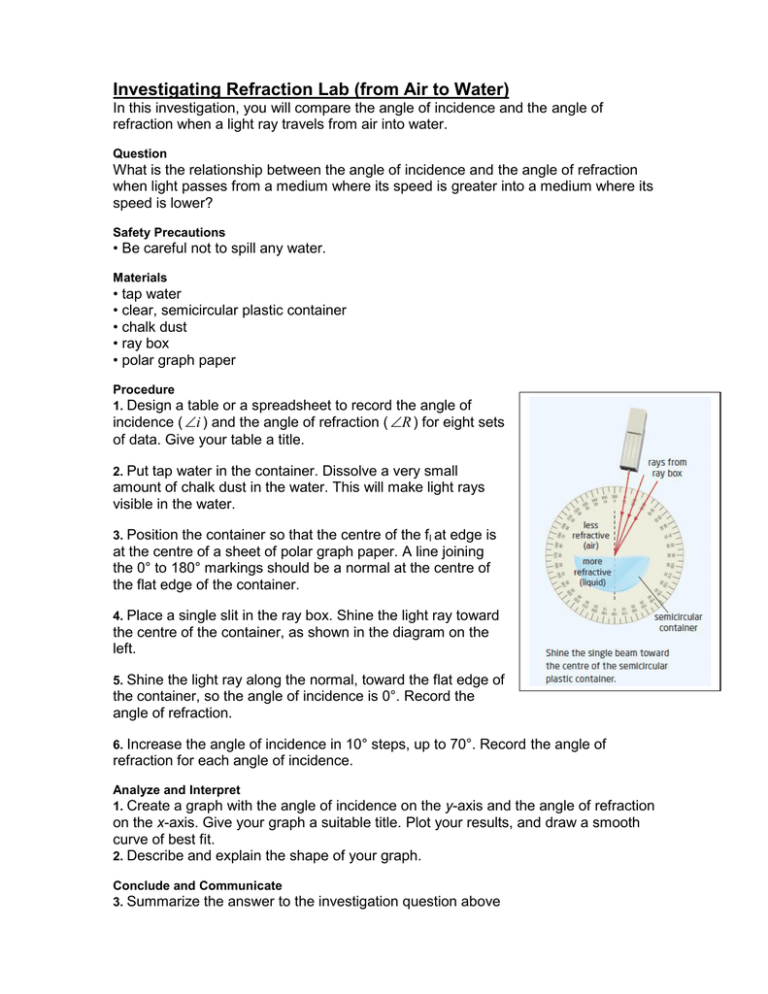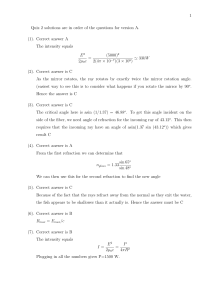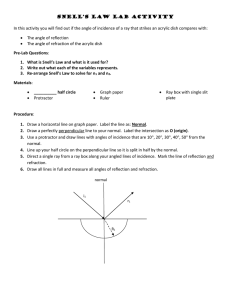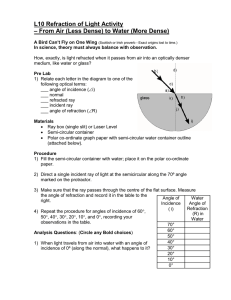Investigating Refraction Lab (from Air to Water)
advertisement

Investigating Refraction Lab (from Air to Water) In this investigation, you will compare the angle of incidence and the angle of refraction when a light ray travels from air into water. Question What is the relationship between the angle of incidence and the angle of refraction when light passes from a medium where its speed is greater into a medium where its speed is lower? Safety Precautions • Be careful not to spill any water. Materials • tap water • clear, semicircular plastic container • chalk dust • ray box • polar graph paper Procedure 1. Design a table or a spreadsheet to record the angle of incidence ( i ) and the angle of refraction ( R ) for eight sets of data. Give your table a title. 2. Put tap water in the container. Dissolve a very small amount of chalk dust in the water. This will make light rays visible in the water. 3. Position the container so that the centre of the f l at edge is at the centre of a sheet of polar graph paper. A line joining the 0° to 180° markings should be a normal at the centre of the flat edge of the container. 4. Place a single slit in the ray box. Shine the light ray toward the centre of the container, as shown in the diagram on the left. 5. Shine the light ray along the normal, toward the flat edge of the container, so the angle of incidence is 0°. Record the angle of refraction. 6. Increase the angle of incidence in 10° steps, up to 70°. Record the angle of refraction for each angle of incidence. Analyze and Interpret 1. Create a graph with the angle of incidence on the y-axis and the angle of refraction on the x-axis. Give your graph a suitable title. Plot your results, and draw a smooth curve of best fit. 2. Describe and explain the shape of your graph. Conclude and Communicate 3. Summarize the answer to the investigation question above





